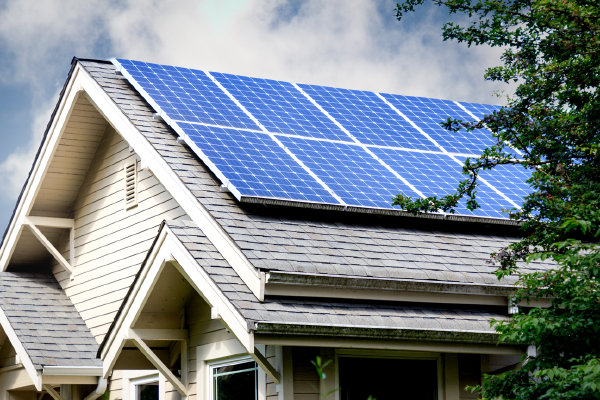Legalization of self-consumption installation
- Post by Solarama Energy Solutions
- Feb 09, 2022

Legalization of self-consumption installation in Spain.
With the approval of Royal Decree 244/2019, new guidelines are given to legalize photovoltaic installations for self-consumption. Until then, all photovoltaic installations implicitly carried the well-known sun tax and multiple administrative obstacles that currently disappear.
Self-consumption photovoltaic installation is considered to be installed both in private homes and in companies and that has a connection to the network. Photovoltaic self-consumption installations are not considered to be those that are in buildings that do not have a connection to the electricity grid or installations whose objective is the sale of energy.
The Royal Decree also introduces novelties such as the simplification of the discharge of surplus energy and the possibility of sharing the production of a given installation.
Preliminary steps to legalize a self-consumption installation
To legalize a self-consumption photovoltaic installation, it is necessary to adhere to one of the modalities reflected in the new Law. The documentation required to legalize a photovoltaic installation will vary depending on the self-consumption modality. Let’s see below the different types of self-consumption:
-
Self-consumption without surplus: The installation is connected to the electricity grid but has a device that prevents surplus energy from being discharged into the grid (zero injection).
-
Self-consumption with surpluses: The installation is connected to the electrical network and in addition to generating renewable energy for self-consumption, it discharges non-self-generated energy surpluses to the electrical network -consumed.
-
Accepted the simplified compensation of surpluses: The part of energy not consumed is discharged into the network and in exchange for it the user receives an economic compensation from the marketer on the bill monthly.
-
Not included in the simplified surplus compensation: In this case, the surplus energy produced by the photovoltaic solar energy installation will be sold on the electricity market.
The new simplified formula for compensation for dumping surpluses affects both individual consumers (single-family homes) and shared consumption (neighborhood communities, buildings 26), while the mode of self-consumption without surpluses is only allowed for single use.
Legalization of self-consumption installation without surpluses
The procedure is very simple since it is enough to notify the energy marketer of the area that a photovoltaic self-consumption installation has been placed in the property.
As there is no discharge into the electrical network it is not necessary to have access or connection permits. You only need to deliver the installation certificate and the report or technical project.
With this type of installation, you can only use the energy that you produce yourself and a mechanism will be installed that prevents both consumption and discharge outside the self-consumption installation (zero injection).
The documentation that must be presented is the following:
- Low voltage installations in self-consumption mode without surpluses:
- Technical design report (Power < 10 kW) or project and Construction Management Certificate (P>10 kW).
- Certificate of electrical installation.
- Declaration of responsibility for the installation, accompanied by the EU declarations of conformity in Spanish from the manufacturer of the inverters and/or electrical equipment installed.
- Documentation required for the evaluation of the anti-discharge of energy to the network.
- Initial inspection certificate (P> 25 kW)
- Data communication form.
- High voltage installations in self-consumption mode without surpluses:
- Draft.
- Certificate of electrical installation.
- Work management certificate.
- Declaration of responsibility for the installation, accompanied by the EU declarations of conformity in Spanish from the manufacturer of the inverters and/or electrical equipment installed.
- Documentation required for the evaluation of the anti-discharge of energy to the network.
- Initial inspection certificate (P> 25 kW)
- Maintenance contract
- Summary sheet of characteristics.
Legalization of self-consumption installation with surpluses
In order to legalize a photovoltaic installation with surpluses and with compensation, a series of requirements must first be met in the installation:
- The primary energy source must be of renewable origin.
- The total power of the associated production facilities cannot exceed 100 kW.
- The consumer must sign a single supply contract for associated consumption and for auxiliary consumption with a marketing company.
- The associated consumer and producer must sign a self-consumption surplus compensation contract defined in article 14 of the Royal Decree.
- The production facility must not receive an additional or specific remuneration regime.
In both cases, whether the self-consumption installation with surpluses is with or without compensation, the documentation required to be presented to legalize it is as follows:
- Low voltage installations with power not exceeding 100 kW in the self-consumption mode with surpluses:
- Technical design report (Power < 10 kW) or project and Construction Management Certificate (P>10 kW).
- Certificate of electrical installation.
- Declaration of responsibility for the installation, accompanied by the EU declarations of conformity in Spanish from the manufacturer of the inverters and/or electrical equipment installed.
- Initial inspection certificate (P> 25 kW)
- Data communication form.
- Acceptance of the technical and economic conditions of the connection (P> 15 kW or that it is on undeveloped land).
- If inverters are installed, manufacturer’s document.
- Rest of production facilities in self-consumption mode with surpluses:
- Draft.
- Communication of the acceptance of the technical and economic conditions of the connection issued by the distribution company.
- Accreditation of the legal, technical and economic-financial capacity to carry out the project.
- Summary sheet of characteristics.
- Work management certificate.
- Certificate of electrical installation.
- Responsible declaration of the holder in which he certifies that he has the appropriate concessions, authorizations or permits that correspond to be granted to the Administrations, organisms.
- EU declarations of conformity in Spanish from the manufacturer of the inverters and installed electrical equipment.
By choosing Solarama as your solar partner, we will take care of all aspects of your installation, from the design, financing and warranties, to the legalization and processing of the applications for subsidy, and the monitoring and optimization of the solar installation during the following years.


